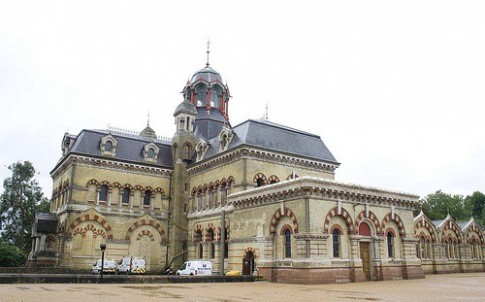The Romans may not have had a fully scientific understanding of bacterial infection but that didn’t stop them thinking that sewerage might be a good idea.
They are credited with constructing their first sewage system in Rome between 800 and 735BC, a public works likely to have improved the health of its inhabitants as well as bringing relief to their olfactory systems.
Skip forward to London in 1858 and further offences against the sense of smell in the form of the ‘Great Stink’, a situation that prompted Parliament to push through a Bill that would see Sir Joseph Bazalgette deliver one of Britain’s most ambitious and enduring engineering projects.
Sir Joseph’s 900km sewage network was designed for a city with a population of two million and was opened by Prince Charles’ great-great grandfather Edward, Prince of Wales (later King Edward VII) in 1865.
This Wednesday Prince Charles is set to visit the Lee Valley Tunnel and Abbey Mills Pumping Station (pictured) to mark the 150th anniversary of Sir Joseph’s sewer network.

The growth of London puts inevitable strain on its infrastructure, with notable tunnelling projects by National Grid and Crossrail helping with projects designed to anticipate the requirement for energy and transport services.
Coinciding with Prince Charles’ visit is a celebration of the completion of tunnelling work on the £635m Lee Tunnel, the deepest ever constructed under London and an essential element of Thames Water’s long-term strategy to clean-up the River Thames.
In publicity material Martin Baggs, Thames Water chief executive said: ‘We are honoured that The Prince will be joining us for this important moment in our history, with Abbey Mills a fitting place to hold the celebration. It formed the central feature of Bazalgette’s Victorian sewerage system, but the site is also at the core of our current developments.’
London’s population currently hovers around the 8.5 million mark and each year, around 39 million tonnes of untreated sewage mixed with rainwater is discharged into the river from overloaded treatment works and combined sewer overflows.
Thames Water’s solution is built around three major schemes: a virtually complete £675m programme to upgrade its five main sewage works (Beckton, Crossness, Deephams, Riverside and Long Reach), the £4.2bn Thames Tideway Tunnel and Lee Tunnel, which runs seven kilometres from Abbey Mills to Beckton, is 75m deep and set to be in operation by December.
The Prince of Wales is president of WaterAid, Thames Water’s principal charity, which is asking the public to help tell the story of how clean water changed Britain over the centuries, and is marking 2015 with its Big History Project.
Baggs added: ‘We can often take our own access to safe water and sanitation for granted. The focus on our history really reminds us that a time when we too didn’t have the basic human requirements our taps and toilets provide isn’t that long ago. Anyone living in London today owes Sir Joseph Bazalgette a great debt of gratitude.’




Red Bull makes hydrogen fuel cell play with AVL
Formula 1 is an anachronistic anomaly where its only cutting edge is in engine development. The rules prohibit any real innovation and there would be...